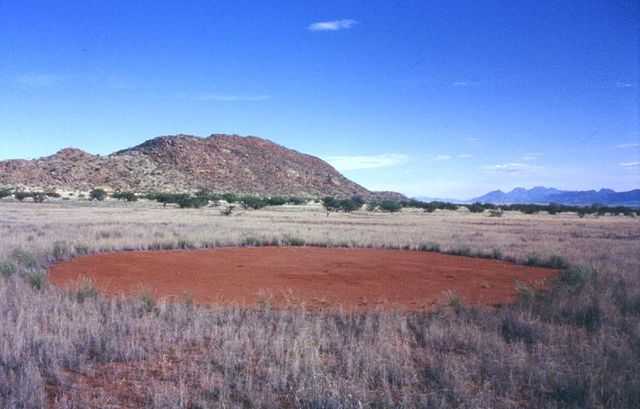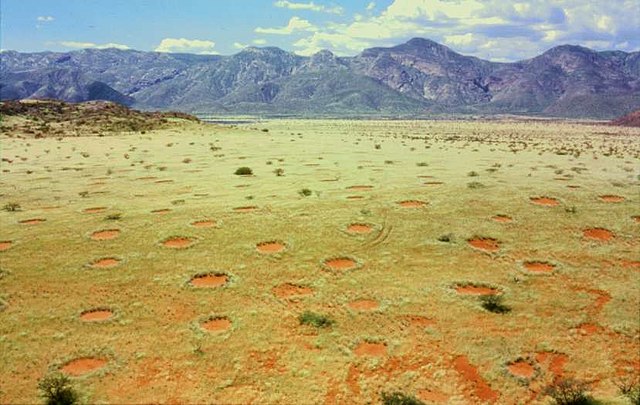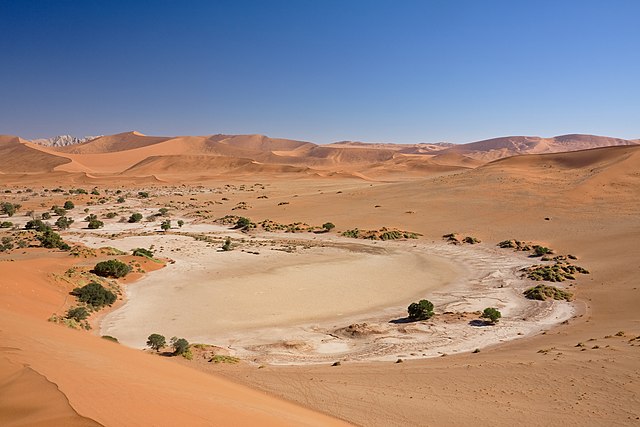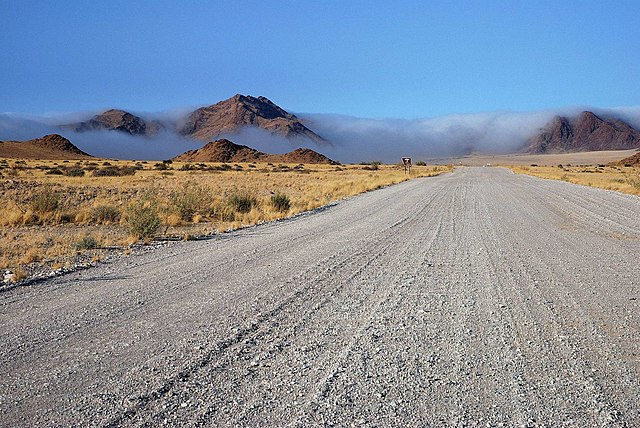Fairy circle (arid grass formation)
Fairy circles are circular patches of land barren of plants, varying between 2 and 12 metres in diameter, often encircled by a ring of stimulated growth of grass. They occur in the arid grasslands of the Namib desert in western parts of Southern Africa, and in a part of the Pilbara in Western Australia. Studies have posited various hypotheses about their origins, but none have conclusively proven how they are formed. Theories include the activities of various types of termites, or the consequence of vegetation patterns that arise naturally from competition between grasses.
A single fairy circle, Namibia
Fairy circles in the Marienflusstal area in Namibia
Aerial view of Fairy circles within Namib-Naukluft National Park (2017) 24°08′14.09″S 15°41′31.63″E / 24.1372472°S 15.6921194°E / -24.1372472; 15.6921194 (Fairy circle)
Fairy circles in Namibia's Marienfluss valley
The Namib is a coastal desert in Southern Africa. According to the broadest definition, the Namib stretches for more than 2,000 kilometres (1,200 mi) along the Atlantic coasts of Angola, Namibia, and northwest South Africa, extending southward from the Carunjamba River in Angola, through Namibia and to the Olifants River in Western Cape, South Africa. The Namib's northernmost portion, which extends 450 kilometres (280 mi) from the Angola-Namibia border, is known as Moçâmedes Desert, while its southern portion approaches the neighboring Kalahari Desert. From the Atlantic coast eastward, the Namib gradually ascends in elevation, reaching up to 200 kilometres (120 mi) inland to the foot of the Great Escarpment. Annual precipitation ranges from 2 millimetres (0.079 in) in the aridest regions to 200 millimetres (7.9 in) at the escarpment, making the Namib the only true desert in southern Africa. Having endured arid or semi-arid conditions for roughly 55–80 million years, the Namib may be the oldest desert in the world and contains some of the world's driest regions, with only western South America's Atacama Desert to challenge it for age and aridity benchmarks.

An image of the Namib Desert by the MODIS instrument
Namib desert and ocean
Sossusvlei, one of Namib's major tourist attractions, is a salt and clay pan surrounded by large dunes. The flats pictured here were caused by the Tsauchab stream after summer rains
Thick morning fog rolls in from the ocean, near Sossusvlei; moisture from the fog allows the native flora to survive the aridity








